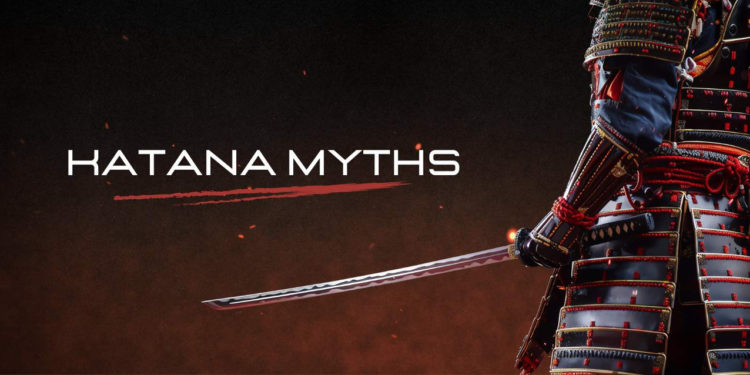The katana, a sword made in Japan, continues to interest people due to it unique technological and cultural significance. As perhaps the most famous Japanese sword in existence, the katana is known for its curved blade and as a symbol of the samurai warrior, artistic Japanese culture and the nation’s tradition.
What started as an early form of weapons during the samurai warriors has evolved into one of the finest sword making commiserate of today. Now let’s follow the development of this symbolically raised sword and its relevance to the Japanese spirit.
Origins of the Katana
The history of katana can be found as far back as ancient Japan; however, its true beginnings can be found during late Heian period (794-1185). Early Japanese swords were generally straight and broad-bladed weapons that borrowed heavily from Chinese and Korean sword-making traditions. Early blades known as “chokuto” were intended for thrusting rather than cutting, which limited their effectiveness during close combat.
As Japanese warriors faced more dynamic and varied battle conditions during feudal warfare, there became an increasing need for more versatile weapons.
This development led to the curved katana, which was better equipped for slashing attacks, enabling warriors to deliver quick, powerful strikes with swift accuracy. Our modern understanding of this weapon began during Kamakura period (1185-1333), when samurai began using their sword both as weapon and status symbol.
Development of the Katana’s Shape and Design
The signature feature of katanas is their distinctive curved blade, which has evolved over time to maximize efficiency in battle. Initial designs didn’t feature as noticeable of a curvature as seen later, but by Kamakura period it had become more defined, enabling warriors to execute quick yet powerful slashes while on horseback.
The curve of the katana’s blade was designed to facilitate drawing it from its scabbard and striking in one fluid motion, a technique known as “iaijutsu.” But its design wasn’t only about curve; its long, slender blade was carefully forged in order to strike an ideal balance between sharpness and strength – its unique shape created to cut quickly with only one stroke – constantly being refined until creating its ideal form-function balance.
Materials and Craftsmanship
Katana manufacturing is an art, where craftsmanship and materials both play key roles. Some of the world’s katana sword for sale blades are constructed using “tamahagane,” an iron sand-resin produced steel that has become famous due to its use as an ingredient for crafting blades. Folding is then performed to eliminate impurities and create layers of metal that add strength and flexibility to the blade of a katana sword.
Folding metal is essential to creating the optimal balance of hardness (at the edge) and flexibility (in its spine). This craft has been passed down from generation to generation of master swordsmiths who dedicate years, sometimes decades, to perfecting their techniques.
Master toshos use ancient methods to shape and forge these legendary blades into works of art that not only function but look beautiful as well. Each Katana becomes its own work of art as part of this renowned tradition – not simply weapons but functional works of art!
Cultural Importance of Katana
Beyond its practical use in battle, the katana holds immense cultural value in Japan. For centuries, its symbolism was associated with Japanese feudal society through samurais who served as backbone warriors. The Katana was more than simply an instrument of military might; it represented bushido – the code of honor followed by samurai warriors that stressed values such as loyalty, courage, and honor; this symbol represented these ideals physically through its body language – in other words it became part of them!
Samurais often considered their sword to be their identity and often passed it down through generations to symbolize family heritage and honor. Over time, the katana became an indispensable cultural artifact, appearing in literature, art and religious practices alike. It represented the discipline, integrity and devotion to duty of its bearer samurais as an embodiment of Japanese martial culture heritage.
Early Katana Use in Warfare
Unlike earlier straight swords, its curvilinear design made it ideal for close combat where slashing motions proved far more effective than thrusts. The katana was designed to cut through armor with ease and its sharp edge allowed samurai to use it with devastating precision when combating enemies. Furthermore, its versatility allowed it to be used not only in battle but also for ceremonial and ritualistic uses – during this period its design and use became further refined by demands of warfare and the samurai code which shaped its evolution.
The Katana in the Edo Period
The Edo Period of the Japanese history from 1603- 1868 brought about some changes in the use of katana in society. After the arrival of Tokugawa in Japan there was less war and less use of weapon including katana since the country was relatively peaceful. In the period of peace, the samurai went through a process of transformation from the actual fighters to the officials where the sword stopped being a fighting tool but rather a symbol associated with power, nobility, and self-governance.
At this point, the art of making swords was refined, and more and better weapons were produced, making it a more valued aspect. Samurai rather wore two swords: one larger, called katana, and one smaller, called wakizashi, as tradition required them to dress as their position stated. The need for better quality swords rose rapidly and swordsmanship or the art of sword fighting were rapidly practiced in feudal Japan as “Kenjutsu,” which meaning “the art of sword fighting,” and “Iaido,” which means “drawing and cutting with a sword.”
Notable Katana Makers and Notorious Swords
Through history, several legendary swordsmiths have contributed significantly to the mystique surrounding the katana by crafting some of its most esteemed blades – Masamune is often considered one of the greatest in Japanese history.
His blades are legendary for their outstanding quality and beauty; some even fetching enormous prices at auctions. Muramasa’s swords have become synonymous with dark and violent actions due to their ability to easily cut through almost anything.
These legendary swordsmiths and their works have greatly contributed to the mythos surrounding katana swords, elevating them from mere weapons into revered cultural artifacts. Some katana blades such as Honjo Masamune’s have even been designated national treasures due to their immense historical and cultural value far surpassing any military value.
Conclusion
The Katana’s journey from battlefield weapon to cultural symbol is testament to its longstanding legacy. From its roots in feudal Japan through modern martial arts and popular culture, its popularity and lasting legacy remain undiminished today – the sword being revered worldwide due to its beauty, craftsmanship and symbolic meanings – providing people a glimpse of Japan’s cultural riches and rich cultural legacy.











































































